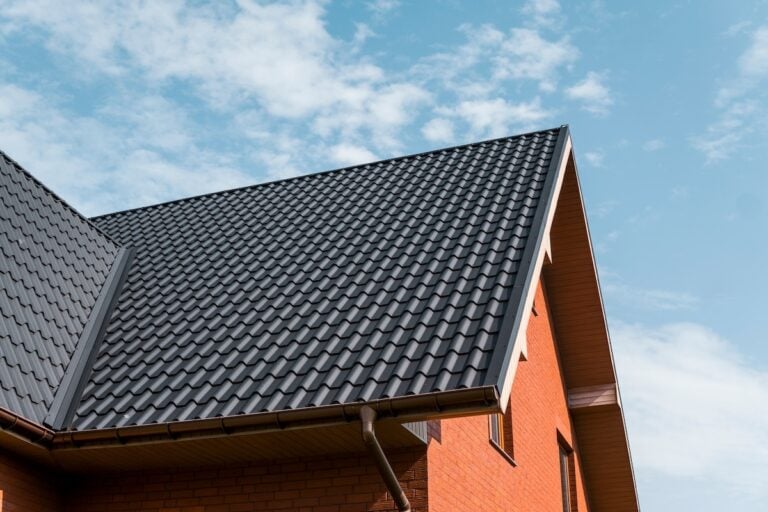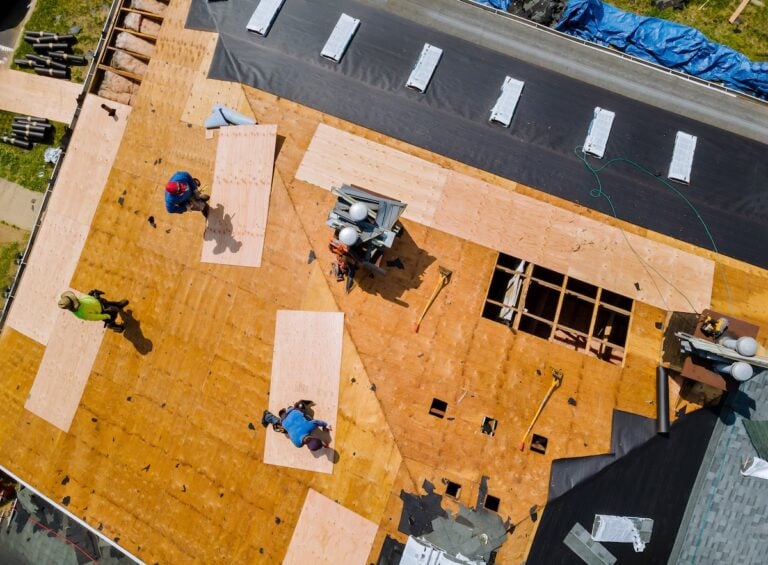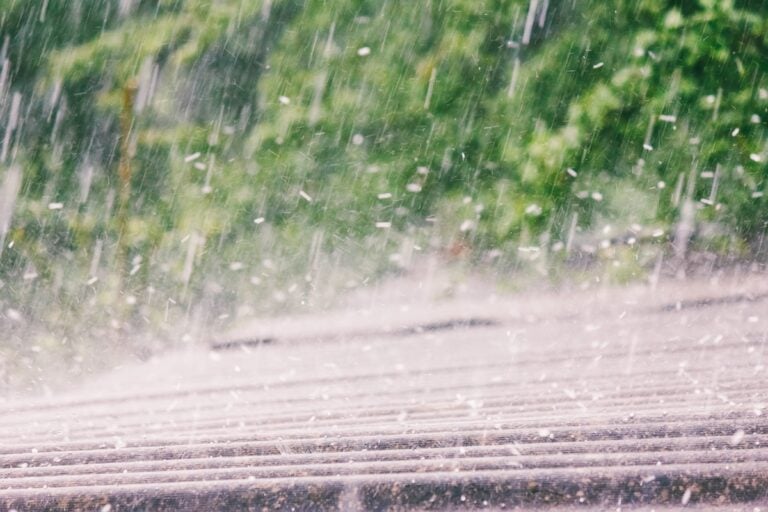Noticed mysterious water spots on ceiling but no leak in sight? It can be incredibly frustrating and concerning. These blemishes often hint at underlying issues that need addressing before they escalate. Whether the culprit is condensation, plumbing, or something else entirely, this guide will help you identify and fix the problem before it worsens.
Here’s what we’ll cover in this post:
- Why checking your ceiling for these spots is important
- What causes water spots on a ceiling with no visible leaks? (a detailed breakdown with examples)
- How to fix water spots on a ceiling caused by various issues
🤔 Why Checking Your Ceiling for These Spots Is Important

Noticing water spots on your ceiling, even without visible leaks, should never be ignored. These spots can indicate potential problems that, if left unaddressed, might lead to more extensive damage and costly repairs down the line. Regular inspections and prompt action can save you time, money, and stress in the long term.
Here’s why checking your ceiling for water spots is crucial:
- Prevent Structural Damage: Prolonged moisture can weaken ceiling materials, jeopardizing the integrity of your home.
- Avoid Mold Growth: Left unchecked, water spots can create a breeding ground for mold and mildew, potentially harming your health.
- Identify Hidden Issues: Water spots might signal hidden leaks, roofing problems, or faulty pipes that require immediate attention.
- Save on Costs: Addressing the issue early can prevent expensive repairs or replacements later on.
- Protect Indoor Air Quality: Preventing water damage reduces the risk of damp and musty conditions that can impact the air you breathe.
By keeping a close eye on your ceiling, you’ll ensure the safety and longevity of your home while maintaining a healthy living environment.
🔎 5 Causes of Water Spots on a Ceiling with No Visible Leak

Water spots without an obvious leak might seem puzzling, but rest assured, there are possible explanations. Here are five likely causes:
1. Condensation Issues
Have you ever noticed moisture building up in certain rooms, such as bathrooms or kitchens? This is often caused by condensation, which occurs when warm, humid air comes into contact with a cooler surface, like a ceiling. The temperature difference causes the moisture in the air to condense into water droplets. Over time, this accumulation of moisture can lead to unsightly water spots on your ceiling. Bathrooms and kitchens are especially prone to this issue due to the high levels of humidity from cooking, showering, or poor ventilation. Without proper airflow or dehumidification, condensation can build up and create long-term damage.
2. HVAC or Air Duct Leaks
Another common culprit behind ceiling water spots is a leaky HVAC system or poorly insulated air ducts. Cooling systems naturally produce condensation as part of their operation, but if there are leaks in the ductwork, this moisture can escape and seep into your ceiling. Over time, the intermittent water drips caused by these leaks can leave behind visible water spots and even lead to further damage. This issue is especially common in homes where the HVAC system is either aging or has not been properly maintained. Ensuring your ducts are sealed and your HVAC system is functioning efficiently is key to preventing this problem.
3. Roofing Issues Without Obvious Leaks
Sometimes, roofing problems can cause water spots on your ceiling even if there are no obvious, visible leaks. Small imperfections in your roof, such as cracks in the flashing or missing shingles, can allow water to seep in during extreme weather conditions. This is especially true during storms with wind-driven rain, which can force water through even the tiniest gaps. These issues are often difficult to detect at first, as the damage may not be immediately visible. Over time, however, the moisture can accumulate and become noticeable through water spots on your ceiling, signaling a need for closer inspection of your roof.
4. Plumbing Problems Nearby
Plumbing issues in the vicinity of your ceiling can also result in water stains, even if there isn’t a visible, active leak. Minor fractures in pipes, improperly sealed joints, or small leaks can slowly release moisture into the surrounding area. This is especially common in bathrooms located directly above the ceiling with visible water marks. The water from these minor leaks can soak into the ceiling material over time, eventually leading to stains and potential structural damage. Regular maintenance and inspections of nearby plumbing systems can help prevent this type of issue.
5. Storm Effects Without Immediate Damage
Severe weather events can also contribute to ceiling water spots, even if the damage isn’t immediately apparent. Storms with heavy rain, strong winds, or hail can compromise your roof or attic insulation, leaving behind vulnerabilities that allow moisture to infiltrate your home. While the damage might not be noticeable right away, over time, water from these areas can seep down and create visible water spots on your ceiling. It’s important to inspect your roof and attic after extreme weather conditions to identify and address any potential issues before they worsen.
🛠️ Fixing Water Spots on a Ceiling

Once you’ve identified the potential cause of your water spots, it’s time to address and resolve the issue. Each culprit has its own remedy. Below are some general solutions:
1. Improve Ventilation to Manage Condensation
Proper ventilation is essential for managing condensation and preventing moisture buildup. Start by installing exhaust fans in bathrooms or other areas prone to high humidity. Additionally, opening windows when possible or using dehumidifiers can help regulate indoor moisture levels and keep condensation under control.
2. Inspect and Seal Ductwork
Your HVAC system and ductwork should be regularly inspected for any signs of leaks or poor insulation. Leaking ducts can cause inefficiencies and contribute to moisture problems. If you spot significant issues, it’s advisable to hire a professional to carry out extensive repairs and ensure your system is functioning optimally.
3. Conduct a Roof Inspection
A thorough roof inspection is crucial to identifying potential sources of leaks and damage. Look for loose or missing shingles, as well as any signs of flashing damage. To stay ahead of problems, schedule routine professional inspections, especially during storm-prone seasons when roofs are more vulnerable to wear and tear.
4. Check Plumbing Fixtures
Plumbing issues are a common cause of ceiling stains, so it’s important to inspect all joints and seals in the area above the affected ceiling. Tighten any loose connections, and replace faulty components to prevent further leaks. Regular maintenance of your plumbing fixtures can save you from costly repairs down the line.
5. Repair Damaged Insulation
Storms or water leaks can compromise the insulation in your attic or crawl space. Check these areas for signs of damage, particularly if you’ve noticed water stains or moisture issues. Any water-damaged insulation should be replaced promptly to prevent further staining and maintain proper energy efficiency in your home.
🏠 Ceiling Water Spots
When water spots appear on your ceiling with no obvious leak, it’s a warning sign that something deeper could be wrong. Ignoring it can lead to costly repairs down the line, but with Roof Troopers, you don’t have to face it alone. Our team brings years of expertise, thorough inspections, and proactive solutions to ensure your home is protected from storm damage and hidden issues.
Trust Roof Troopers to get to the root of the problem and provide repairs that last. Don’t wait—contact us today for a professional inspection and let us help safeguard your home!
Don’t pay for your roof until 2027!
0% APR, same as cash for 24 months
Get Started Today!
"*" indicates required fields








